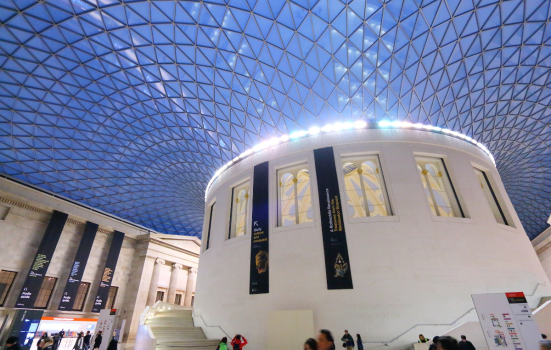Solid year-on-year rise in attendence figures for UK visitor attractions, but the total remains 11% down on pre-pandemic levels.

tupungato/iStock
Visitor numbers to the UK's leading attractions rose to nearly 150 million last year, fgure published by the Association of Leading Visitor Attractions (ALVA) show.
During 2023 across all of ALVA’s 358 member sites there were 146.6 million visits - up 19% on the figure for 2022. However, the number remains 11% down on the 163.9 million recorded in 2019, the last year unaffected by the Covd pandemic.
ALVA’s outdoor member sites, which began a quicker recovery from pandemic-enforced closures and restrictions in 2021, saw a 2% year-on-year increase in visitor numbers last year. This means that for the second year running, indoor attractions saw more growth in their visitor numbers with a 23% increase.
READ MORE:
- More than half of arts audiences are first-time bookers
- Museum and gallery visits remain 25% down on pre-pandemic
After being the third most visited attraction in 2022, the British Museum has risen back to the top of the list for the first time since 2019.
It saw 5.8 million visits in 2023, a 42% year-on-year increase, which the museum attributed in part to its China’s hidden century exhibition that ran from May to October.
The second most visited attraction was South Kensington’s Natural History Museum, which recorded its highest ever visitor numbers in a year, with a 22% increase taking its total to 5.7 million. The most visited outdoor attraction was The Crown Estate, with 5.5 million visitors, which was a 3% decline on 2022 figures.
Nine of the top 10 visited attractions were inside London. Together, the top 10 had a combined total of 39.6 million visits last year, around 27% of all visits to ALVA member sites.
In Scotland, the most visited attraction was the National Museum of Scotland. It moved down one place overall, to 12th, but saw an 11% increase to 2.2 million visitors, and also remained the most visited attraction outside London and the South East of England.
The most visited attraction in Northern Ireland was Titanic Belfast. It enjoyed a 28% increase in visits last year after welcoming 800,949 visitors, equating to 43rd place overall, following a gallery refurbishment.
Overall, visits to Scottish and Northern Irish attractions were both up 21%. Meanwhile, Wales saw a 25% increase in visitor numbers, which ALVA attributes to National Museum Wales joining the association last year. The most visited Welsh attraction was St. Fagans National Museum of History, which saw 594,990 visits, equivalent to a 23% increase and 61st place overall.
ALVA’s member sites in London saw a 24% year-on-year increase in visitors. The region of England outside London with the biggest year-on-year growth was the East of England, which was up 11%, followed by the West Midlands, with 10%.
ALVA Director Bernard Donoghue commented: “Our members are not yet back to hosting the same number of visitors that they did in 2019, but they are really delighted that even in a challenging cost-of-living climate visitors are still prioritising spending special time with special people at special places.”
Donoghue added that while the extension of tax relief for museums, theatres and galleries was a “very welcome announcement” in the recent budget, there was “a missed opportunity” to reintroduce tax free shopping for overseas visitors.
“[This] would have improved the UK's international competitiveness, and reduce VAT for tourism and hospitality, which would have helped businesses repair their balance sheets,” he said.




